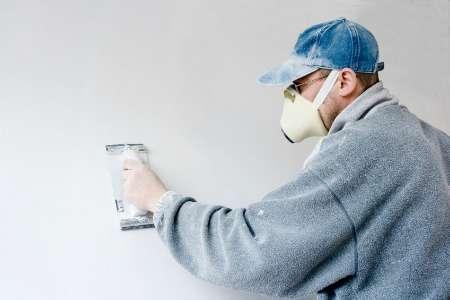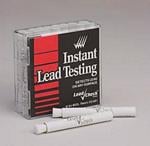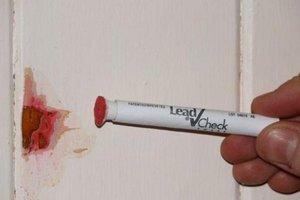NARI Member Testifies Before Small Business Committee About Frustrations With EPA

Yesterday, David Merrick, chairman of the NARI Government Affairs Committee and owner of Merrick Design and Build, testified before the House Small Business Committee about many of the concerns remodelers' have about the RRP Rule and the difficulties trying to effectively work with EPA. I think David’s testimony spoke for the opinions of most NARI Members as well as for most remodelers. Let me know what you think.
Click here to view the entire video which was just over one hour long. David’s introduction and his testimony begin at about 19:50.
Here are some highlights I pulled from watching the video myself.
In response to questions posed by a representative overseeing the SBA (Ms. Peters?), David stands up for and points out the realities and challenges for smaller one or two man remodeling businesses starting at about 30:28. David stressed the burden record keeping has on such smaller businesses just trying to earn enough money within the time they have to produce their product, pointing out that even if they are doing the right things regarding the work they perform, they can be punished by EPA for paperwork challenges.

Many might miss this watching the video, but I think it exposes the lack of understanding many of those in our government have about the nature of the remodeling industry and the businesses that participate in the industry. The same representative overseeing the SBA (Ms. Peters?) made the following comment at about 33:10 in what I observed to be an obvious effort to be sarcastic;
“And when I get my bid from a contractor on remodeling should I triple the time and double the money? (She laughs) Just Kidding…”
Perhaps, like many contractors, EPA has a problem under estimating and under bidding?
 At 58:56 Mr. Tipton asks: “So, effectively what you are saying is if the EPA is asking for input maybe it would be a good idea if they listened? To that question Merrick replied that the EPA is always gracious about meeting with NARI and taking their input, but he further clarifies his response by commenting “They take our comments and disappear behind doors and we never hear from them again.”
At 58:56 Mr. Tipton asks: “So, effectively what you are saying is if the EPA is asking for input maybe it would be a good idea if they listened? To that question Merrick replied that the EPA is always gracious about meeting with NARI and taking their input, but he further clarifies his response by commenting “They take our comments and disappear behind doors and we never hear from them again.”
I think it is worth listening to the balance of the video after Merrick’s comment to hear Mr. Tipton’s comments and opinions in support of more sensible oversight of EPA’s tactics, behavior, attitudes and performance.
Give EPA more money?
During the hearing there was much banter regarding whether EPA needs more money to effectively regulate or alternately should get less money because of their poor performance. I think they are missing the point. We don’t have more money to give EPA unless we take it from somewhere else or borrow it from China and put the burden of paying for the borrowed money on our children’s future. Maybe many of the the same children the rule is intended to protect.
Here is one example. During the hearing Merrick points out That currently only 122,476 firms in the remodeling sector are considered EPA Lead-Certified Firms, out of the estimated 652,206 remodeling businesses in the United States. Has EPA done a good job in the past 26 months since the rule took effect if 80% of remodeling contractors are still operating uncertified? Are they really keeping our children safe from lead poisoning with the plan they assembled knowing the reality of available funding?
I think it goes back to original planning. Try this analogy.

The simple way to put it is it’s great to figure out and plan for a nice seafood lobster dinner, but if you get to the store and you don’t have enough money then all that planning on a great seafood dinner is kind of wasted. My suggestion is that the way EPA went about creating this rule is rather silly especially because they just don’t have the funding or the budget to administer and enforce the rule the way the rule was written.
Perhaps if EPA really understood our industry and how contractors operate, they would have considered a Design/Build approach!
Thanks David.
Click here for a NARI Press Release about the hearing

 Looking for accurate information about the EPA RRP rule?
Looking for accurate information about the EPA RRP rule? 
 Renovators and others hoping for the return of the opt-out still have reason for hope for the return of the RRP opt-out because of the Lead Exposure Amendments Act of 2012. Two separate bills were introduced in the Senate and House earlier this year by Sen. James Inhofe, R-Okla., and Reps. John Sullivan, R-Okla., and Tim Murphy, R-Pa. Learn about the most recent Amendment Act introduced on June 7th
Renovators and others hoping for the return of the opt-out still have reason for hope for the return of the RRP opt-out because of the Lead Exposure Amendments Act of 2012. Two separate bills were introduced in the Senate and House earlier this year by Sen. James Inhofe, R-Okla., and Reps. John Sullivan, R-Okla., and Tim Murphy, R-Pa. Learn about the most recent Amendment Act introduced on June 7th 
 NARI members are encouraged to send letters of support, using the NARI template you can find
NARI members are encouraged to send letters of support, using the NARI template you can find  Today, according to an
Today, according to an  Reinstate the opt-out provision to allow homeowners without small children or pregnant women residing in them to decide whether to require LRRP compliance, not the government.
Reinstate the opt-out provision to allow homeowners without small children or pregnant women residing in them to decide whether to require LRRP compliance, not the government. Recently, EPA recognized the LeadCheck Test Kits for testing drywall and plaster for lead under the RRP rule.
Recently, EPA recognized the LeadCheck Test Kits for testing drywall and plaster for lead under the RRP rule. 3M reported that they are temporarily using the video until a new video is released. The major change 3M will make to the video will include the following language:
3M reported that they are temporarily using the video until a new video is released. The major change 3M will make to the video will include the following language: EPA has recently updated recognition of the 3M™ LeadCheck™ for use on drywall and plaster. Below are the specific instructions from the manufacturer, 3M, for conducting testing of drywall and plaster for lead. These instructions must be followed by the certified renovator for the test results to be recognized under the RRP rule by EPA. I think the key point to remember when doing such testing is that you are testing the paint, not the drywall:
EPA has recently updated recognition of the 3M™ LeadCheck™ for use on drywall and plaster. Below are the specific instructions from the manufacturer, 3M, for conducting testing of drywall and plaster for lead. These instructions must be followed by the certified renovator for the test results to be recognized under the RRP rule by EPA. I think the key point to remember when doing such testing is that you are testing the paint, not the drywall:
 a) With a clean utility knife, make a nickel sized half circle cut at a low angle (about 5 degrees) cutting down to the bare drywall (gypsum) and plaster core to expose all layers of paint. Make the cut as seen in figure A.
a) With a clean utility knife, make a nickel sized half circle cut at a low angle (about 5 degrees) cutting down to the bare drywall (gypsum) and plaster core to expose all layers of paint. Make the cut as seen in figure A.




 The first thing you should consider is that all bills introduced must first go to committee. The second thing you should realize is that the vast majority of bills introduced … will never get out of committee review and thus, will never get a chance to be voted on. Thirdly, even if the bill gets voted on, it must be approved by the majority of Senators (in this bill’s case). Lastly, even if passed by the Senate; the House & President must approve.
The first thing you should consider is that all bills introduced must first go to committee. The second thing you should realize is that the vast majority of bills introduced … will never get out of committee review and thus, will never get a chance to be voted on. Thirdly, even if the bill gets voted on, it must be approved by the majority of Senators (in this bill’s case). Lastly, even if passed by the Senate; the House & President must approve. The grandparent of RRP is Title X of the Housing and Community Development Act of 1992, also known as the Residential Lead-Based Paint Hazard Reduction Act of 1992 (Title X). The grandparents gave birth to the parent of RRP, Title IV—Lead Exposure Reduction, which amended the Toxic Substances Control Act (TSCA).
The grandparent of RRP is Title X of the Housing and Community Development Act of 1992, also known as the Residential Lead-Based Paint Hazard Reduction Act of 1992 (Title X). The grandparents gave birth to the parent of RRP, Title IV—Lead Exposure Reduction, which amended the Toxic Substances Control Act (TSCA). To put it simply, we need to come to grips that the RRP is most likely going to be required on public and commercial buildings. Public and commercial buildings have adults in them. Would it make sense to Opt-Out adults in target homes, but not Opt-Out adults in public and commercial buildings? Unfortunately, the answer is most likely not.
To put it simply, we need to come to grips that the RRP is most likely going to be required on public and commercial buildings. Public and commercial buildings have adults in them. Would it make sense to Opt-Out adults in target homes, but not Opt-Out adults in public and commercial buildings? Unfortunately, the answer is most likely not.


 I suggest the real problem is that the original rule was poorly conceived and poorly written. Because we are now stuck with it, the proposed amendments are really just band-aid approaches to try to make it better for or more palatable to those affected by the rule. What we really need is a new well thought out rule to replace the existing rule, with the input and leadership of the industry this time. And, the industry needs to be proactive this time in its writing, its content and its enforcement.
I suggest the real problem is that the original rule was poorly conceived and poorly written. Because we are now stuck with it, the proposed amendments are really just band-aid approaches to try to make it better for or more palatable to those affected by the rule. What we really need is a new well thought out rule to replace the existing rule, with the input and leadership of the industry this time. And, the industry needs to be proactive this time in its writing, its content and its enforcement. Not using lead safe practices on a pre 1978 property is a big risk. Unless the house is pretested before renovations there is no point of reference regarding existing contamination. If lead safe work practices are not used, how will the business prove it did not cause the contamination?
Not using lead safe practices on a pre 1978 property is a big risk. Unless the house is pretested before renovations there is no point of reference regarding existing contamination. If lead safe work practices are not used, how will the business prove it did not cause the contamination?



